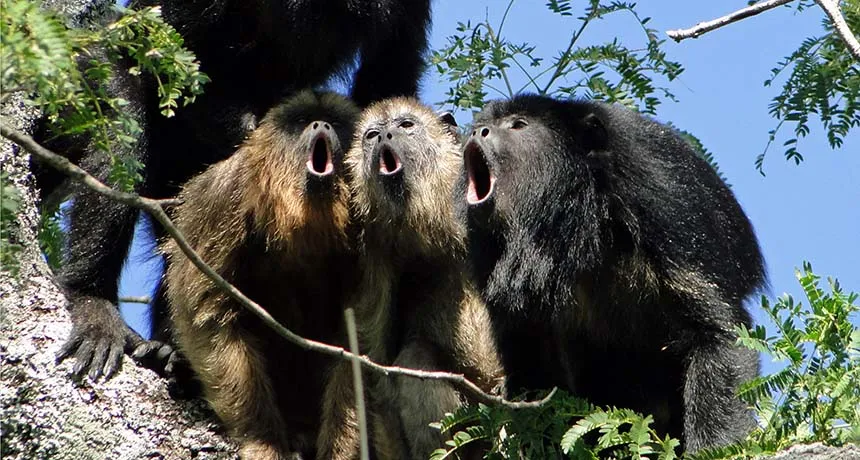In the lush landscapes of Costa Rica, a tragic narrative unfolds as the rapid surge of unregulated eco-tourism and luxury developments clashes with the natural habitat of local wildlife. Recently, a three-day-old orphaned howler monkey has become a poignant symbol of this growing conflict.
A Heartbreaking Discovery
Early one morning, in the renowned beach town of Jacó, a newborn howler monkey was found alone on the beach, still attached by its umbilical cord, and without its mother. This tiny creature, barely larger than a human hand, has become one of the many inadvertent victims of Costa Rica’s booming tourist industry and the expansive construction it brings.
The Electrocution Epidemic
Howler monkeys, native to Central America, are facing a deadly threat from the very environment they inhabit. Each year, thousands of these monkeys and other wildlife suffer fatal electrocutions from uninsulated power lines and transformers—an unintended consequence of the sprawling electric grid that supports new infrastructures, including luxury villas for affluent international buyers.
These animals, unable to distinguish between electrical wires and natural vines, often traverse these wires to reach feeding grounds. Unfortunately, their journey frequently ends in tragedy when they encounter the high voltage of electrical transformers, leading to instant electrocution. The issue is compounded when other monkeys, hearing the cries of a distressed troop member, rush to help and meet the same fate.
Costa Rica’s Ecological Irony
Despite its global acclaim as a beacon of ecological sustainability, Costa Rica’s pursuit of green energy and its allure to eco-conscious tourists and wealthy expatriates are paradoxically contributing to the degradation of its own wildlife habitats. Around Nosara, a popular surfing and tourist destination, the constant noise of construction disrupts the peace of this once pristine rainforest area. Here, luxurious mansions and sprawling developments are emerging rapidly, often without comprehensive environmental impact assessments, creating a hazardous environment for the local fauna.
The Human Impact and Efforts to Mitigate
The situation in Nosara is a microcosm of a larger problem. Local wildlife rescue organizations, such as the British charity International Animal Rescue (IAR), find themselves on the front lines, dealing with the consequences of these developments. The IAR operates a rescue center near Nosara, where many young howler monkeys are brought after being orphaned or injured by electrocution.
Volunteers at these centers often act as surrogate mothers to the fragile infants, providing round-the-clock care in an attempt to rehabilitate and eventually reintroduce them into the wild. Despite their efforts, the survival rate for these orphaned monkeys remains dismally low, underscoring the direness of their plight.
Innovative Solutions and Conservation Efforts
Recognizing the severity of the issue, a team of primatologists from the University of Costa Rica has initiated a project to mitigate these dangers. By constructing rope bridges between treetops near Playa Hermosa, they provide safe passages for the monkeys, reducing the need to traverse dangerous electrical wires. This initiative has shown promising results, with the local monkey population reportedly doubling between 2015 and 2021.
Balancing Development with Wildlife Conservation
The ongoing situation calls for a critical reevaluation of how development is managed in ecologically sensitive regions. Costa Rica’s challenge lies in balancing its economic aspirations against the imperatives of wildlife conservation. As the country continues to attract global attention for its natural beauty and commitment to renewable energy, it also faces the imperative of implementing stricter regulations and innovative solutions to protect its native species.
In the end, the story of Costa Rica’s howler monkeys is not just about the animals themselves but about the broader implications of human activity on wildlife. It serves as a poignant reminder of the responsibilities that come with inhabiting a planet as interconnected and fragile as ours.

